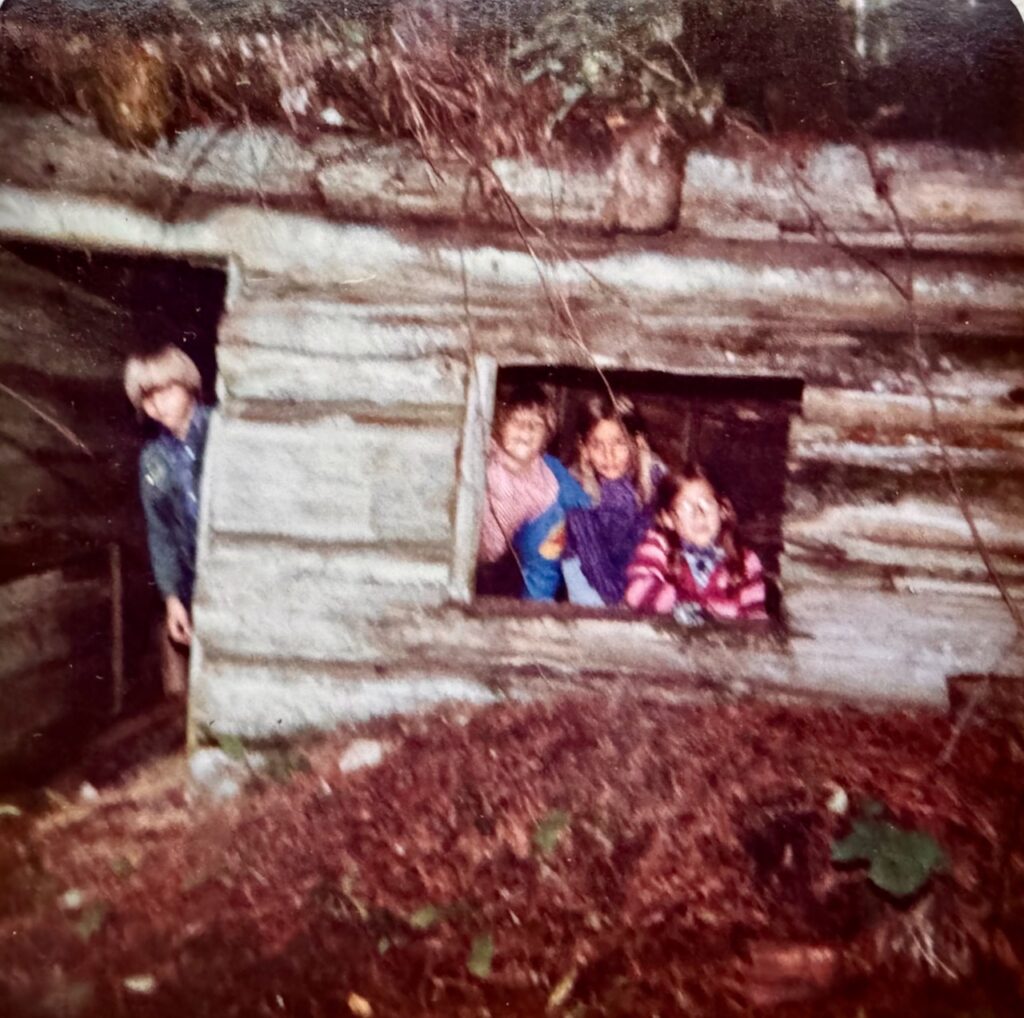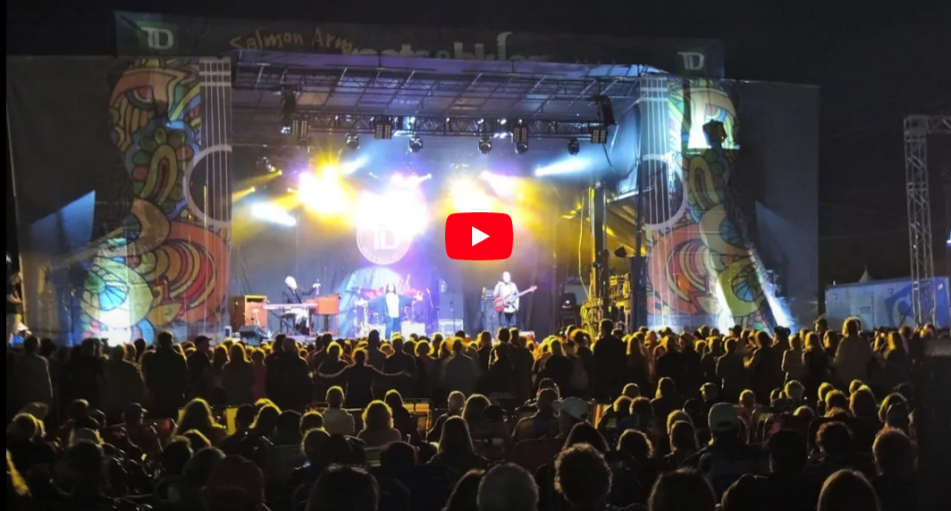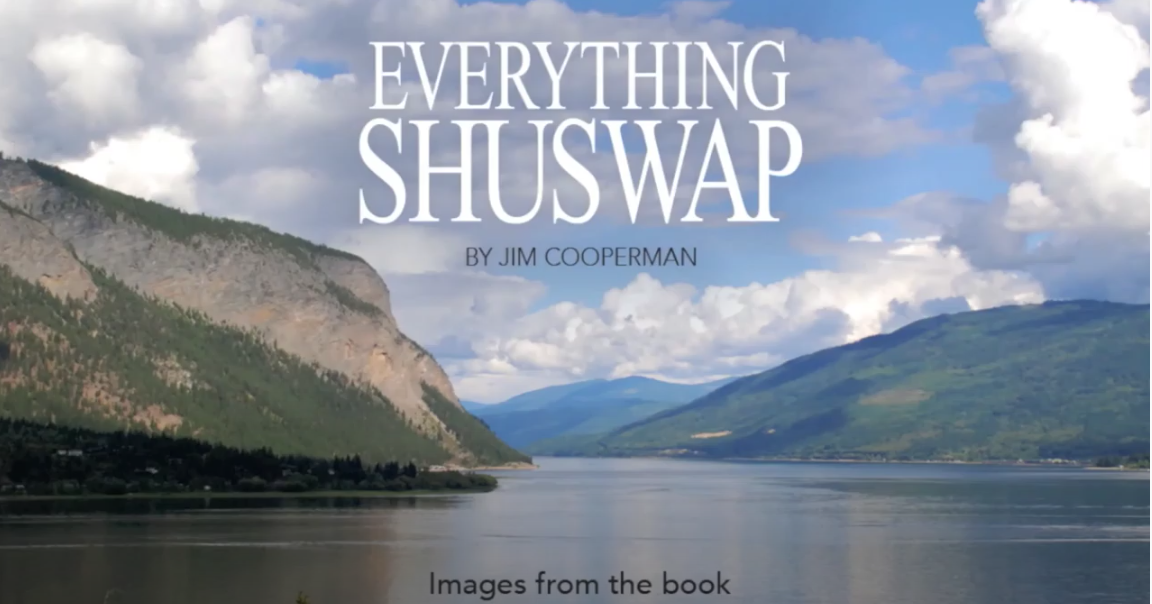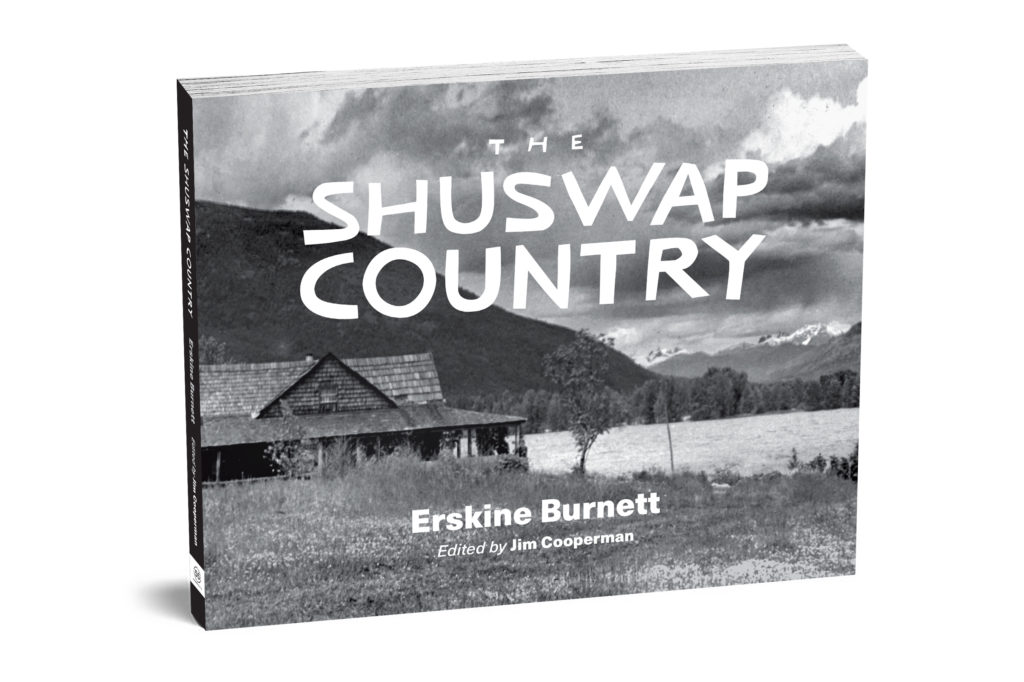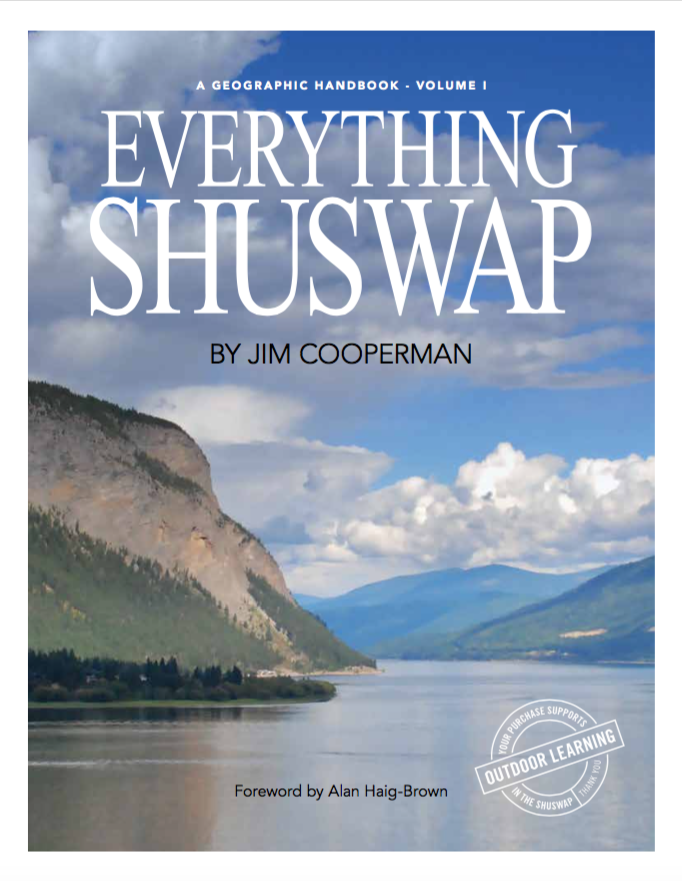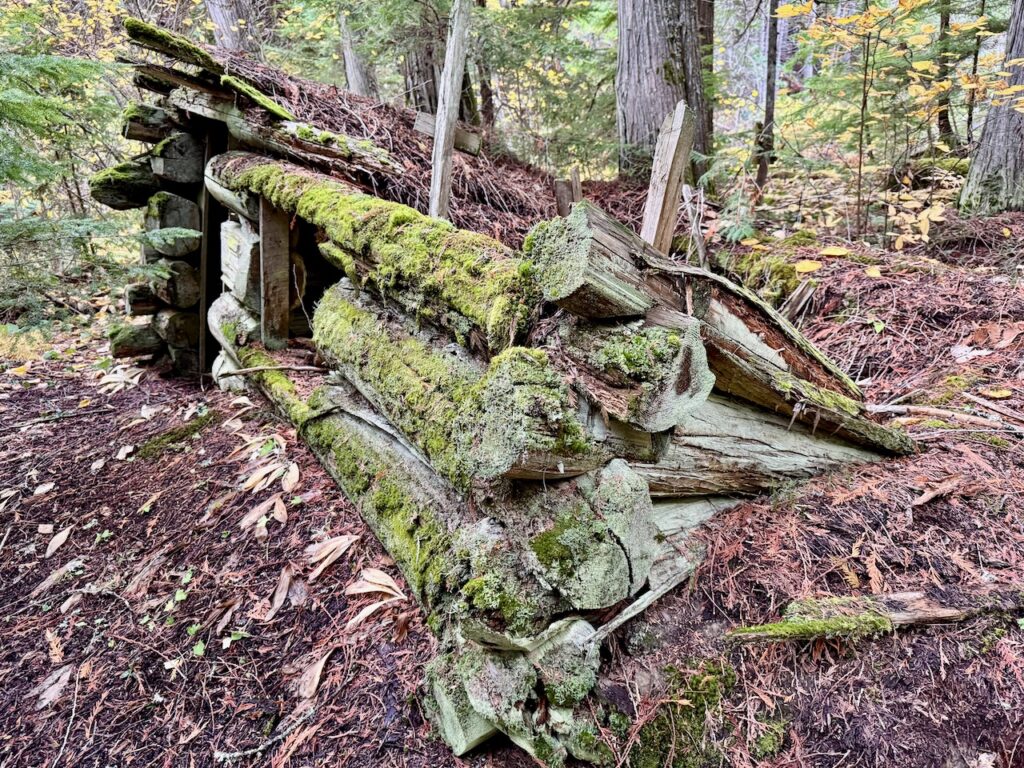
A recent visit to the rotting remains of Billy Lee’s log cabin provided a reminder about how I began my writing career nearly forty years ago. My curiosity about who built the cabin led me to begin doing local history research that included interviewing the old-timers, visiting the archives and eventually writing articles for the Chase newspaper. After joining the fledgling North Shuswap Historical Society I suggested we publish a journal, then became its co-editor for the first two volumes. Since then, my writing progressed from local history to environmental journalism, to bioregional articles, to my book Everything Shuswap and now continues with these Shuswap Passion columns and my blog, shuswappassion.ca.
My first hike into this once beautiful canyon filled with magnificent old growth cedar trees that are now blackened from the 2023 firestorm, was in 1969. That first summer here, my former land partner, Michael Stettner, and I climbed the bluff above our property and then hiked down the steep hillside to the creek. As we neared the end of the canyon, a man yelled, “go back, I am blasting” and soon after there was a loud explosion. It was Emil Martinovsky, and he was blasting rock to fill a dam for his irrigation system that piped water from the creek down to his home on the lake.
In 1986 I interviewed Barbara Wood who was the daughter of Alex MacKay and Oliver Freeman’s niece, two early Lee Creek pioneers. Of course, she did not know Billy Lee, but had heard stories from an early squatter, Mr. Tulip, of how Billy was an English bachelor and built the cabin and panned for gold in the creek in 1885. The only documentation that mentions Billy Lee is this short article from the March 11, 1886 edition of The Inland Sentinel:
On the eve of Sat. the 6th instant, a serious stabbing affair took place. Considerable drinking had been going on when more or less disputes and some fighting ensued. Finally Charles Arbuckle got roughly handled by his partner William Lee. Soon after, while Lee was laying in camp, Arbuckle rushed in and with a dirk knife made nine stabs upon the body of his partner Lee – one of the cuts penetrating his left lung. The would-be assassin fled to the Mtns. The men near the camp done what they could and stopped the bleeding and immediately sent for a doctor. Dr. Tunstall secured some good men and proceeded by hand car to Shuswap Lake and crossed and at camp rendered the injured man professional assistance. Lee could not be moved but is receiving care and at last accounts was improving.
Officer Smith took a few specials and proceeded to Scotch Creek, but nothing could be learned as to the whereabouts of Arbuckle. It is thought he will leave the country.
Two weeks later, the newspaper reported that Lee “is getting well.” I also searched through the provincial public accounts and found that “Indian Francois” was paid $1 for conveying the officer and his men across the lake, $10 was spent for meals and beds, $3 for “hire of canoe” and $2 for “hire of 4 horses.” That was likely then a significant expense!
Given the lack of historical information about Billy Lee, we can only speculate about his life and those times. There had been a logging camp at Scotch Creek and likely a sawmill, all to produce ties and timbers for building the CPR, which was completed in 1885. Some of the laid-off workers, including Chinese labourers, proceeded to mine for gold in Scotch Creek and Billy Lee may have been one of them. Perhaps it was not until after he recovered, that he built his remote cabin where he could hide to prevent getting stabbed again!
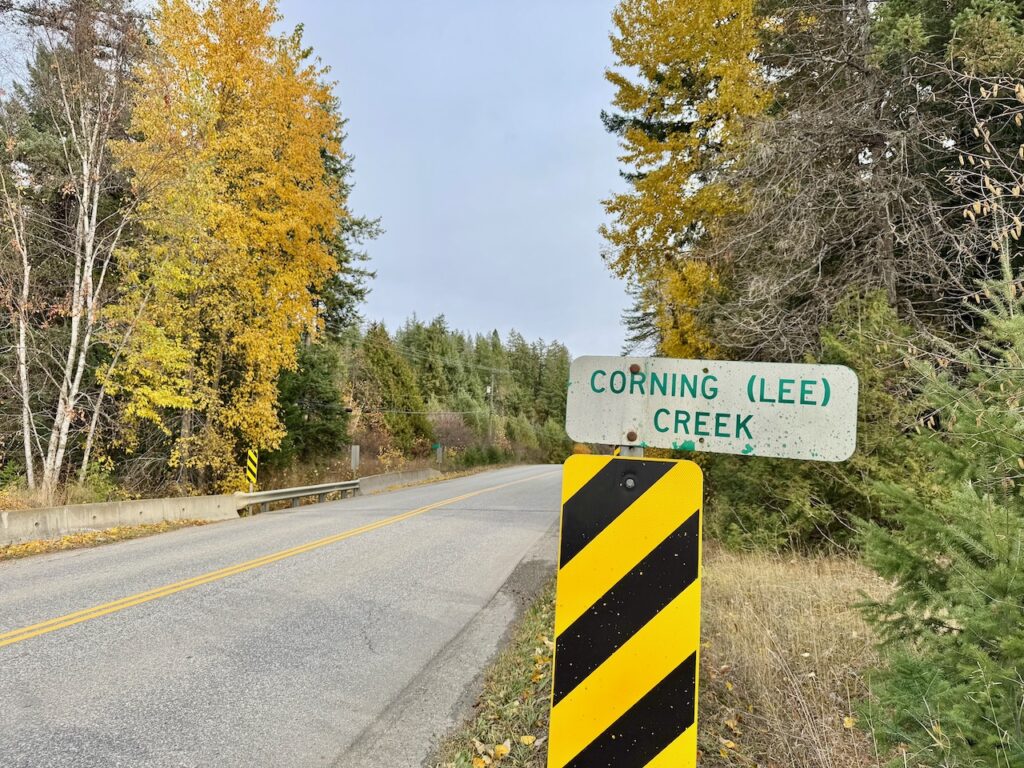
We will never know why he chose to live in that cold, dark canyon or if he ever found any gold, yet the time he spent there must have impressed others who named the creek after him. In 1913, Ray Corning homesteaded our property in Lee Creek, then abandoned it and moved his log home to the property below it. He eventually moved to Salmon Arm, became a road superintendent and retained his log house here for a summer residence. During the depression, he hired many of the men from Lee Creek, thus helping his neighbours endure those hard times. Some years later, the creek was renamed after him, yet the Corning Creek sign at the bridge has Lee Creek in parenthesis.
POSTSCRIPT
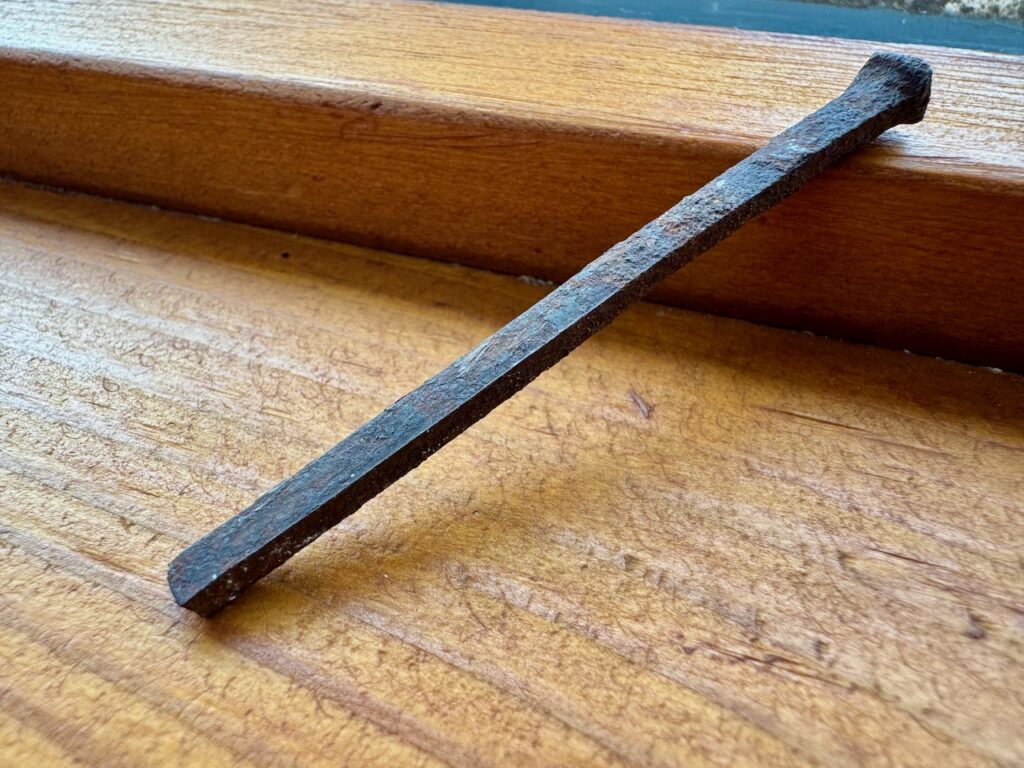
One way the cabin’s date of construction can be determined is by the square nails used. The first nails were hand forged and then in the early 1800’s, square nails were cut by machine and these were used up until the 1890s, when round nails were made out of heavy wire. Billy Lee’s cabin was likely used again in the 1930s and that is why there are also round nails in some of the boards and logs. Apparently, a logger stayed there while he was cutting poles in the canyon.
When I first visited the cabin and for some years after that, there were remains of a small barn built into the hillside, where a horse could have been kept. The horse may have been used to log the cedar poles.
At the end of the canyon there is a waterfall and access further upstream is impossible. This area burned very hot in 2023 and many of the trees are blackened sticks. some of the cedars still have green needles, but it remains to be seen if they will survive. The reason it burned so hot was that the windstorm created a venturi effect, as the wind speed increases in a canyon where it is restricted, thus creating a much hotter fire like a blowtorch.
I do not remember the first time I visited the cabin, but it has been a popular destination for hikes for many decades. It is on private land, so permission is needed to access the area.
